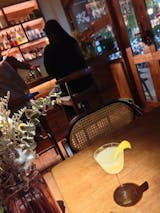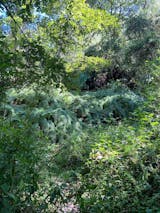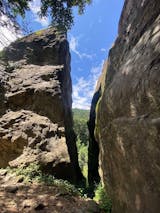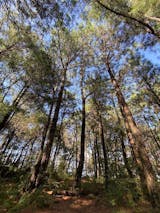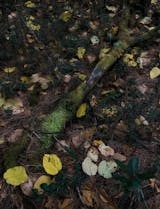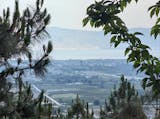Participation reminder:
This activity is suitable for travelers who are interested in history and culture, otherwise it will be worth it, after all, anyone can visit the ancient city. This experience is from Yufeng's personal perspective, telling the history, culture and customs of Dali along the way. Therefore, parents are advised to book with caution for younger children (under 10 years old) or those who are not interested
Dali Ancient Town is similar to other ancient towns in that its tourism industry is homogenized. However, hidden beneath this ostentatious surface is the unique historical heritage of Nanzhao and Dali Kingdom, as well as the culture of the integration of local deity worship, Buddhism, Christianity, Taoism and Islam.
This Dali Cultural Tour series hopes to go beyond the activities in our natural landscape and countryside and take you to get to know Dali, a city with rich cultural and historical heritage.
Yufeng is a guide for cultural tours in Dali Ancient City. He was a programmer when he was working in the city, and he wrote novels as a hobby. He once participated in the protection project of the Yunnan Golden Monkey in Laojun Mountain and worked as a volunteer at the Cangshan Nature Center for a year. He was a colleague of Wang Bin and Chaoxi. Now he is a video editor, and in his spare time, he is responsible for this activity. He has rich historical knowledge, loves nature and hiking, has experienced changes in his life, and is a person who can have in-depth conversations on many aspects.
Itinerary:
10:00 Meet at Dali South Gate
Marshal Du Wenxiu's Mansion (Dali City Museum), Wuhua Tower, Mosque, Martial Temple, Screen Wall, Big Green Tree, Confucian Temple, Xiyun Academy (No. 1 Middle School), and Catholic Church.
12:00 End
The following is Yufeng’s understanding and introduction of Dali:
Some pre-trip questions:
Why is Dali called Dali?
Dali, a peaceful place, has also seen bloodshed and wars in history. What legendary stories happened here? Why are the two dynasties in Dali's history so different?
Did the characters in "Demi-Gods and Semi-Devils" really exist in history? What were they like in real life? Wuhua Tower was rebuilt many times. Where was it first built? What kind of bloody storms did it experience?
What is unique about Dali's local beliefs? Why is it said that their gods are half god and half human? What are the characteristics of Dali's architecture? Why can you tell the surname of a family by looking at the words on the wall?
Who was the first person to be worshipped in a martial arts temple? There are martial arts temples all over the country. What is so special about the martial arts temple in Dali that makes it the only one in the country?
What are the three standard features of Dali Bai villages? Why are there big indigo trees in every village? What does the church in the clouds look like? What is its unique label in the world?
Let us follow the footsteps of history, stroll through time, embark on a cultural journey, and unveil the veil of Dali...
-----------------
Text: Yufeng
A few years ago, because I lived and worked in Dali, I began to study Dali's history, humanities, beliefs, customs, architecture, etc., as well as some interesting folk legends. As my research deepened, I began to have a strong interest in Dali's history. Now I know much more about Dali than I do about my hometown in the north. In fact, not only history, but everything related to Dali interests me. If you like a person, you want to know everything about her. The same is true for a place. I want to introduce Dali, which I like, to more people.
The route setting of Dali Ancient City Cultural Tour:
I will share with you the unique history and culture of Dali at the places I pass along the way:

For example: The South Gate is the main gate of Dali City, called Shuanghe Gate, and there is a road not far away called Shuanghe Road. These all originated from an allusion "Shuanghe Expands the Territory".
Many people never thought that Dali was also the ancient capital of six dynasties. Nanzhao and Dali Kingdom were the two most famous dynasties, and there were four short-lived small dynasties in between.

Du Wenxiu of the Qing Dynasty went from being a scholar to a general. As time went by, the former general's mansion became a museum. Everyone was there and saw the heavy steps of history in the bloody battles of Nanzhao.
As for the Dali Kingdom, we can compare the characters in Mr. Jin Yong's novels to talk about the people and events of that time: Duan Zhengchun and his son, Master Yideng Duan Zhixing. They are similar to those in the novels in history, but more different.
We all know "Along the River During the Qingming Festival", but few people know that there is another painting that is also known as "the two best in the north and the south" and is treasured by Emperor Qianlong.

Wuhua Tower was first built during the Nanzhao period. It was not originally located in the ancient city of Dali. It was much larger than it is now. It had five floors and could accommodate 10,000 people. The decline of Nanzhao could not be concealed amidst the feasting, singing and dancing.

The Innocent Family Screen Wall (Surname Yang)
When I first came to Dali, I once saw a family in a Bai village with the words "Nanzhao Prime Minister" written on their screen wall. I was shocked at the time. What a bold family this was. Different screen wall inscriptions represent different surnames and heritages. This is the screen wall culture of Dali.

Previously, I only knew that the Wu Temple worshipped Guan Gong, and I guessed that the word "Wu" meant that he was a master of martial arts. Wasn't he also called "Martial Saint"? But I didn't know there was a new interpretation, and the earliest person worshipped in the Wu Temple was not Guan Gong, but someone else. Who was worshipped in the temple was ultimately controlled by the emperors of the feudal dynasty.
The Wu Temple is also a place to display the culture of the Bai people. There is not only Guandi in the Wu Temple, but also more than 60 Benzhu. Benzhu is a religious belief unique to the Bai people, and they are closely related to the lives of Bai villagers. The Benzhu Temple has become one of the three standard features of Bai villages. The ancient Garuda is also one of the Eight Immortals.
The big green tree is a kind of banyan tree and is one of the standard features of Bai villages. Of course, it also has interesting legends and stories.

This is a Catholic church that does not look like a church at all from the front. It also has a beautiful name, called the Church on the Clouds. This church perfectly integrates Western culture and traditional Chinese culture, and has become an important place for the spread of Catholicism. The history and current situation of Christianity (Protestantism, Catholicism) entering Yunnan is very special and rich, and is a vivid modern history of China.
Tip: If you have other good travel experience with other agencies, please recommend it to us and we will share it with travelers. WeChat: lingjiec, Email: lingjiec@yahoo.com (Many of our recommendations, including cancellations, come from travelers’ feedback)














